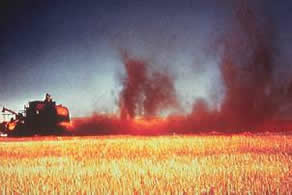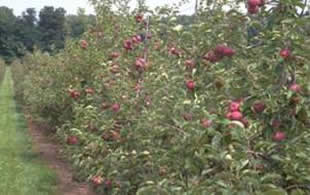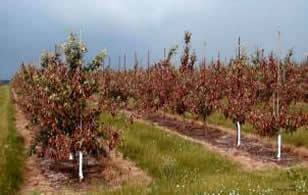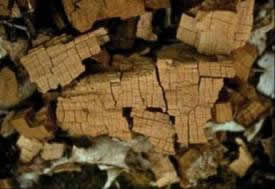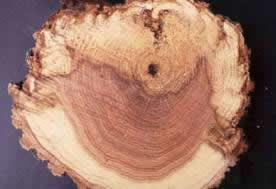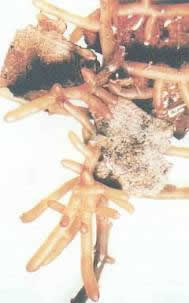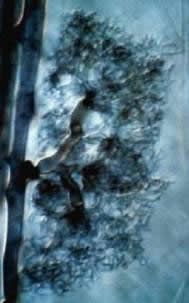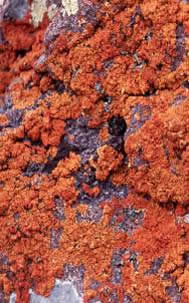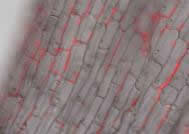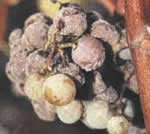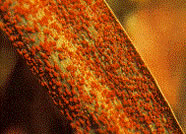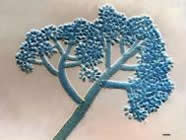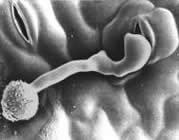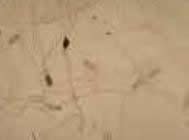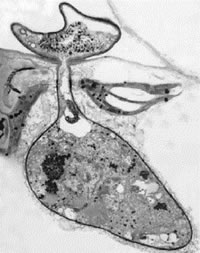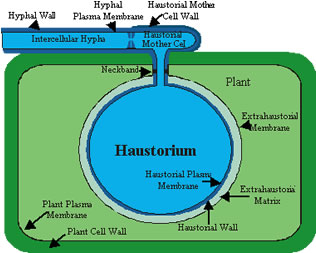Some
Background Information on Biotrophic Host/Parasite Interactions
Plants make up the majority of earth's living matter. All
animals, including humans, depend on plants for survival. Hence humans developed
a fundamental interest in plant health. The science of plant pathology deals
with the identification and treatment of factors affecting plant welfare.
The origin of human interest in plant pathology dates back to the early days
when our ancestors foraged the plains for nutrients as nomads, since diseased
plants usually produce less fruit. The field of plant pathology itself is
very wide and ranges from fundamental basic research to applied assistance
to farmers in the field. It covers abiotic stress factors like humidity and
salinity as well as biotic stress caused by the action of animals, especially
humans. In a more narrow sense, however, plant pathology deals with disease
caused by the action of ever present microorganisms, like viruses, bacteria,
and fungi.
Fungi 
Fungi belong to the higher Eukarya. They combine features
typical for plants and animals, but represent a separate kingdom within the
tree of life. Historically they were considered more closely related to plants,
but modern taxonomy places them closer to animals. Fungi are most widely known
as typical destructive agents, being responsible for the decomposition of
organic matter. Apart from this 'saprophytic' life style (growth and propagation
on already dead material), fungi have established a number of interactions
with other organisms. These interactions range from mutualistic symbiosis
(mycorrhiza, lichens), via co-habitation without symptoms (endophytes) to
parasitic relationships (necrotrophic and biotrophic).
| The tree of life from
Alexopoulos et al (1996) Introductory Mycology, 4 ed. John Wiley &
Sons, Inc., New York |
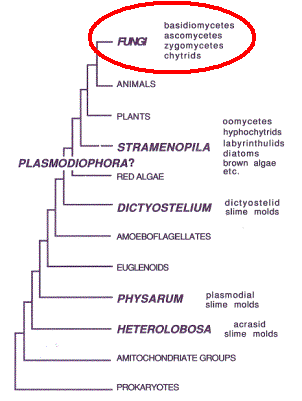 |
Fungal
Pathogens
Some fungal pathogens colonize a plant and subsequently
kill their host quickly through the action of degrading enzymes and/or toxins.
This lifestyle is called necrotrophic (e.g. Botrytis cinerea). Other
fungi have to rely on a living host to complete their life cycle. These are
called obligate biotrophic (e.g. Uromyces fabae). There is a smooth
transition between the two extremes which is characterized by a number of
pathogens classified as hemibiotrophes. Hemibiotrophic fungi, like Colletotrichum
spp., are typified by a more or less extended biotrophic phase, before
switching to necrotrophic growth and killing of their host.
Biotrophy
Some of the most serious fungal plant pathogens world wide
are obligate biotrophic parasites. In order to mark off the true obligate
biotrophic fungi from hemibiotrophs or necrotrophs we suggest the following
criteria: a) highly differentiated infection structures; b) limited secretory
activity; c) a narrow contact zones separating fungal and plant plasma membranes;
d) long term suppression of host defense responses; e) the formation of haustoria
(Mendgen, K. W., and Hahn, M. (2002) Trends Plant Sci. 7:352-356).
The application of these criteria narrows down the range
of obligate biotrophic fungi to the rust – and the powdery mildew fungi.
However, another group of organisms, evolutionary remote from the true fungi,
also form haustoria, the downey mildews (Kingdom: Chromista, Phyllum: Oomycota).
Given the broad phylogenetic spectrum of haustoria-forming organisms it seems
more than likely that these structures have arisen more than once in the course
of evolution. Extending this idea to the structurally similar arbuscules produced
by arbuscular mycorrhizas such an apparatus seems to represent a particularly
successful adaptation of these organisms to their interactions with their
respective host plants.
Early infection structures of biotrophic fungi:
obligate
biotrophic Uromyces spp.
A germ tube (GT) emerges from an urediospore (S)
attached to the host by an adhesion pad (P). After recognition of the guard
cell lip, an appressorium (A) develops over the stomatal pore. The penetration
hypha (PE) penetrates into the substomatal chamber and elongates into an infection
hypha (IH). When the tip of the infection hypha contacts a host cell wall,
a haustorial mother cell (HM) is formed from which the haustorium (H) invades
the host cell. Unique features of the dikaryotic haustorium are the dark-staining
neckband (NB) around the haustorial neck and the interfacial, extrahaustorial
matrix (yellow) surrounded by the extrahaustorial membrane (EHM). After forming
the first haustorium, the infection hypha branches and further intercellular
hyphae, haustorial mother cells (HM) and haustoria are formed
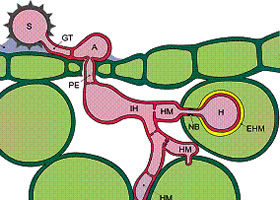
hemibiotrophic Colletotrichum spp.
The spore (S) forms a short germ tube, which differentiates into an appressorium
(A). The penetration hypha (PE) develops, transforming internal pressure into
mechanical force to pierce the cuticle and the cell wall. The penetration
hypha swells to form a vesicle (V) and broad primary hyphae (PH), which are
surrounded by the invaginated plant plasma membrane. The host protoplast remains
alive during the biotrophic stage (1) and an interfacial matrix separates
the protoplasts of fungus and host (yellow). One or two days after penetration,
plant plasma membrane disintegration starts (2). As new host cells are colonized
by primary hyphae, the sequence of a transient biotrophic phase followed by
cell killing is repeated (3)
(from Mendgen, K. W., and Hahn, M. (2002) TiPS 7:352-356)
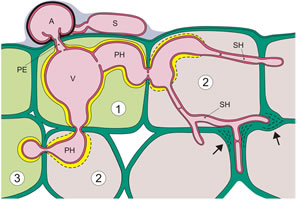
Haustoria
Haustoria are specifically differentiated hyphae breeching
the plant cell wall and penetrating into the host cell. These structures have
generated the interest of plant pathologists ever since their discovery by
the Italian botanist Giovanni Antonio Maria Zanardini about 150 years ago.
The name was introduced the german physician Heinrich Anton de Bary, and is
derived from the Latin word haustor, which means the pail. This illustrates
that the structure and location of these haustoria already suggested a function
in nutrient uptake to researchers at that time.
Transmission electron micrograph image of a haustorium
(Szabo & Bushnell. 2001. PNAS USA 98:7654-5; left)and schematic representation
of the ultrastructural details (right).
However, knowledge about this key element of the obligate
biotrophic life style is still fairly scarce. The main reasons for this are
the preserving lack of functional stable transformation systems for haustoria
forming fungi and the fact that these organs are not formed in culture. This
excludes them from the application of many molecular techniques successfully
in use for other systems.
This is the point to switch to PROJECTS, since the majority
of our research is centered around the elucidation of the role of haustoria.

